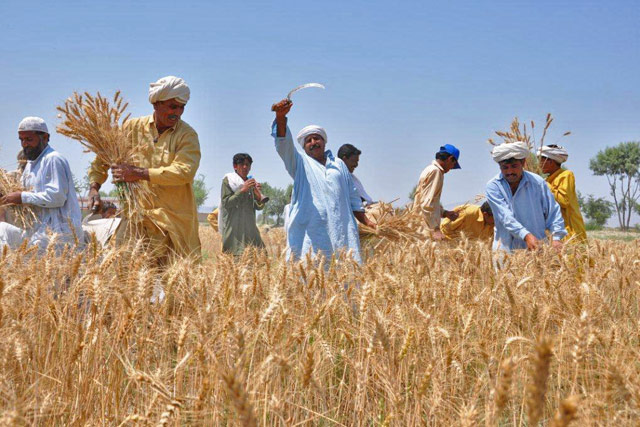THE sub-committee on agriculture policy, formed under the Kissan Commission last year, has come up with a 15-page executive draft of the Punjab Agriculture Policy.
Led by erstwhile Iqrar Ahmad Khan, VC Agriculture University (Faisalabad), the committee has made brief recommendations covering all vital areas of farming.
The executive draft says that three more documents will follow: a medium-sized document of about 100 pages for helping development projects, PC-I-based proposals on these recommendations, and finally, a full volume policy document consisting of 40 chapters as a future reference text.
Defining its vision, the draft says it aims at “making agriculture competitive, profitable and sustainable through enablement, efficiency and value-addition for food and nutrition security and socio-economic development.”
It sets its mission in these words: “Reform the sector as a profitable industry by promoting investment in infrastructure, research, outreach, skills, value chains, agro-industry and rural development. The economy of scale is to be achieved for land cultivated by the small farmers to narrow the productivity gap.”
“The application of Information and Communication Technologies should become integral to the value-chain management. The distortion of terms of trade against agriculture and the rural economy must be stopped. The agriculture-led growth of the economy shall bring prosperity for the masses.”
Importantly, the document calls itself only a step in ‘evolving process’ called policy formation and calls for a regular review of policies in changing circumstances and continuous production of policy papers.
“This farmer centric document should be treated as a base to establish a continuous review of the policy. There should be a 1-3 years plan as a departmental operations manual with implementation plans.
Defining its vision, the draft says it aims at “making agriculture competitive, profitable and sustainable through enablement, efficiency and value-addition for food and nutrition security and socio-economic development”
“At present, the Agriculture Sector Development Framework of 2015 and a livestock policy paper are in place which must be rewritten by 2018. That can only be effective if position papers on issues and commodity analysis are written within the next six months.”
Dilating upon its objectives, the document sets out three areas, which are: technology up-gradation (to the level of precision technology), institutional reforms and infrastructural development.
Most vitally, the document bestows due importance to malnutrition and, for the first time, forces a province to link food security to nutritional security. “Micronutrient deficiency known as hidden hunger is wide spread in Pakistan with major indications from the rural areas. The National Nutrition Survey (2011) revealed that 43.7pc of the children are stunted while 15.1pc are wasted and 31.5pc are underweight. The survey data showed that stunting and wasting in 2011 has increased over the past decade. These problems are higher in rural areas as compared to the urban centres. The suffering is higher in women and children i.e. anemia (61.9pc), iron deficiency (43.8pc), zinc deficiency (39.2pc), vitamin A deficiency (54pc) and vitamin-D insufficiency (40pc).”
This situation demands nutritional interventions to combat the threat of hidden hunger. There is a need to launch school nutrition programmes. It is pertinent to include food and nutrition as a subject in school curriculums. The greater good could only come from a social and behavioural change towards food.
The draft also identifies social disparity and gender mainstreaming as part of the problem, which the policy should set right. “Agricultural growth reduces poverty on a much larger scale than growth in other segments of economy.
The contribution of women to the enterprise largely goes unacknowledged. The income of farm households is usually a mix of on and off farm engagements.
Migration from rural to urban centres has led to erosion of skill and transfer of resources to urban areas. The critical issue is how to retain healthy and skilled workforce in the farming sector while promoting investment available from the income of immigrants.”
Suggesting both short- and long-term policy measures, the draft also recommends that canal water theft must be stopped. Medium to long-term plans should be devised for land and water resource management (fragmentation, on-farm water storage, rain water harvesting, water pricing). The grain markets are insufficient. Infrastructure and legal frameworks are needed to enhance the capacity and promote transparent and competitive business systems, minimising the role of middleman.
Investments should be made in skill development to reduce post-harvest losses and to add value. A comprehensive market reforms programme is needed.
The investment in R&D should be linked with the institutional reforms for the integration of education, research and extension. Commodity research boards should be institutionalised.
Establishment of two research centres, one each on policy and governance are highly recommended. Long-term research experiments be launched to model sustainability of the cropping systems.
Rural development must include infrastructure for farm to markets at a much bigger scale than the present. The rural life must be made attractive to arrest migration by introducing women and youth development programmes along with alternate income propositions at small town centres.
Courtesy Dawn New
